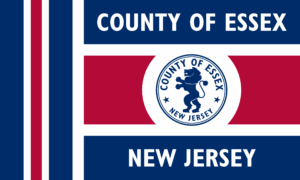East Orange, NJ: A City of Legacy, Leadership, and Living Black History
Just west of Newark, along the NJ Transit corridor, sits East Orange, New Jersey—a city where jazz legends, civil rights pioneers, and working-class families have long carved out space for strength and success. Known as “The Crossroads of New Jersey,” East Orange is more than a gateway—it’s a community with deep Black roots, cultural pride, and a long-standing tradition of excellence in the face of systemic challenge. Today, the city continues to evolve, with new energy rising from its blocks, businesses, and classrooms.
Origin and History
East Orange’s beginnings are woven into the broader story of migration, mobility, and Black self-determination.
- Lenape Territory: The area was originally inhabited by the Lenape people, who lived along what is now the Passaic River basin.
- Colonial & Urban Growth: Settled by Europeans in the 1600s and originally part of Newark, East Orange was established as its own township in 1863 and incorporated as a city in 1909.
- Black Migration & Homeownership: In the 20th century, East Orange became a destination for African American families during the Great Migration. It was one of the first cities in the country where Black residents achieved high levels of homeownership and middle-class prosperity.
- Cultural Legacy: Musicians like Dionne Warwick, Whitney Houston, and Queen Latifah trace their roots to East Orange. The city was also a hub for civil rights activity, Afrocentric education, and Black political leadership.
Demographics
East Orange remains one of New Jersey’s most prominently Black cities—with a strong Caribbean and African immigrant presence.
- Population: Approximately 69,000 residents (2020 U.S. Census)
- Cultural Composition: Predominantly African American, with significant Haitian, Jamaican, Nigerian, and Dominican populations.
- Languages Spoken: English, Haitian Creole, Spanish, Yoruba, and French are heard in homes, churches, and businesses throughout the city.
- Generational Layers: East Orange includes families who’ve lived here for three generations alongside newer immigrant residents making their first mark.
Geographic Location and Size
East Orange’s urban density and transit access make it one of the most strategically located cities in North Jersey.
- Size: 3.9 square miles
- Borders: Bordered by Newark, Bloomfield, Orange, and South Orange.
- Transit Access: Two NJ Transit train stations (Brick Church and East Orange) offer quick service to NYC. Local bus routes and highways like the Garden State Parkway run directly through the city.
Where We Thrive
East Orange is a city where community pride is practiced daily—from front porches to school stages to City Hall.
- Education & Schools: East Orange Public Schools continue to serve a majority Black student population, with a focus on college readiness, arts programs, and local history.
- Faith Communities: The city is home to historic Black churches, mosques, and temples that provide spiritual, cultural, and social support.
- Black-Owned Businesses: From salons and soul food kitchens to barbershops, home health agencies, and event planners, Black entrepreneurship defines much of East Orange’s economic landscape.
- Civic Engagement: The city has produced mayors, council members, and school board leaders who represent the community and invest in grassroots power.
Fun Facts and Local Gems
- Whitney Houston’s Roots: The pop icon spent much of her youth in East Orange, singing in church choirs and building the voice that would reach the world.
- Oval Park: A longtime gathering spot for block parties, school events, and community healing.
- East Orange General Hospital: An independent hospital providing culturally competent care to city residents—many of whom rely on its long-standing service.
- Brick Church Plaza: A local shopping district with cultural staples, small businesses, and a sense of familiarity that chain stores can’t replicate.
Challenges and Change
East Orange is full of talent—but like many historically Black cities, it continues to navigate structural barriers.
- Public Safety vs. Over-Policing: Residents advocate for safety, but also for trauma-informed community policing and alternatives to criminalization.
- Housing Equity: While the city remains more affordable than its neighbors, rising rents and redevelopment projects are creating concerns about displacement.
- Youth Engagement: Teens and young adults are organizing for better mental health resources, culturally affirming education, and real pathways to careers—not just survival.
- Narrative Visibility: Too often, East Orange is mentioned only in crime stats or political briefs—ignoring its brilliance, beauty, and deep intellectual capital.
Community Voices
“We don’t need to be discovered. We’ve been here. Building, creating, surviving, and shining. It’s time for people to listen—not to fix us, but to fund us.”
— Tremaine J., artist and third-generation East Orange resident
Why East Orange Matters
East Orange is one of the few places in the country where Black homeownership, leadership, and culture have endured across generations. Its schools produce scholars. Its churches produce justice warriors. Its streets echo with history. And its future is being shaped by young leaders, immigrant entrepreneurs, and elders who never stopped holding the line.
HFYC uplifts East Orange because its story is America’s story—from survival to sovereignty. From policy to poetry.
Call to Action
Are you from East Orange? Know a student, small business owner, youth organizer, or community elder with a story to share?
We’re listening.
Submit a piece, nominate a neighbor, or help us highlight the real East Orange—from the porch steps to the podium.
